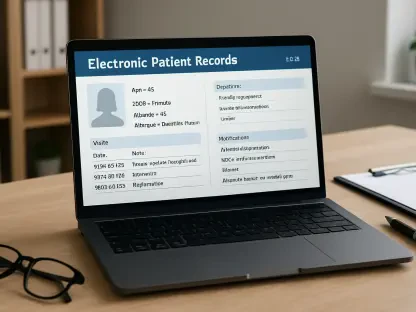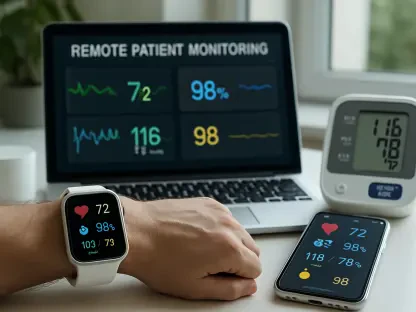Telemedicine has emerged as a transformative force in the healthcare industry, offering efficient, scalable solutions that bridge care gaps and improve patient outcomes. The pandemic accelerated the adoption of telemedicine, making it a household term and a preferred option for many patients. Virtual consultations allow patients to receive care from the comfort of their homes, avoiding the hassles of traditional doctor visits. As a result, online doctor consultations are projected to increase significantly in the coming years, reflecting a growing preference for virtual healthcare visits. Telemedicine’s rise signals a pivotal shift in healthcare delivery, emphasizing convenience, accessibility, and patient-centered care.
The Rise of Telemedicine
Telemedicine experienced a significant boost during the pandemic, becoming a preferred option for many patients wishing to avoid the inconvenience of physical doctor appointments. This trend has continued post-pandemic, with many patients now opting for virtual consultations due to their convenience and efficiency. The shift towards telemedicine has created substantial growth opportunities for telemedicine providers and has attracted considerable attention from investors.
The telemedicine market is projected to grow at a compound annual growth rate (CAGR) of 19.3% from 2025 to 2034, eventually reaching a market value of $426.90 billion. This expansion highlights the increasing consumer demand for accessible healthcare solutions facilitated by telemedicine. The convenience of avoiding crowded waiting rooms and long commutes to physical healthcare facilities has contributed significantly to this shift.
Furthermore, technological advancements in telemedicine platforms and the integration of connected devices that monitor vital signs from home are playing a critical role in advancing telemedicine. These innovations enable healthcare providers to offer more comprehensive and personalized care to patients remotely. The use of artificial intelligence (AI) and machine learning (ML) in telemedicine platforms is also enhancing diagnostic accuracy and treatment recommendations.
Doximity, Inc. (DOCS): A Leader in Professional Connectivity
Doximity operates a cloud-based digital platform tailored for medical professionals in the U.S., allowing them to connect with peers, access the latest medical research, perform virtual patient visits, and manage their careers more effectively. Financially, Doximity has shown impressive results with a year-over-year revenue increase of 20.4% to $136.83 million for the fiscal second quarter of 2025. Its non-GAAP operating income also increased by 41.3% year-over-year, reaching $74.60 million.
Doximity’s trailing-12-month EBIT and levered free cash flow (FCF) margins of 39.27% and 35.67%, respectively, significantly outpace industry averages. Its trailing-12-month gross profit margin stands at 89.94%, much higher than the industry average. These financial metrics underscore Doximity’s strong market position and growth potential in the telemedicine sector.
The company’s ability to engage professionals in their network and provide valuable resources contributes significantly to its success. Doximity’s platform functions as a multifaceted tool for healthcare practitioners, enabling seamless communication and resource sharing, which is crucial in a digital healthcare landscape. The company’s emphasis on providing a robust, user-friendly interface has made it a vital partner in telemedicine, enhancing work efficiency and fostering professional development among its users.
Hims & Hers Health, Inc. (HIMS): Expanding Consumer Health Solutions
Hims & Hers Health operates as a multi-specialty telehealth company, connecting consumers with licensed healthcare professionals through its cloud-based technology. It also provides health and wellness products and services. Recently, Hims introduced daily meal replacement bars and shakes to complement its weight loss offerings, which could further drive revenue and consumer demand.
Financially, HIMS reported a substantial increase in revenue by 77.1% year-over-year, reaching $401.56 million in the fiscal third quarter of 2024. The company also achieved an income from operations of $22.37 million, a significant improvement from a loss in the previous year. These financial results highlight the company’s ability to capitalize on the growing demand for telehealth services and health products.
Strategically, Hims & Hers has focused on broadening its product portfolio to cater to a diverse range of health needs. This expansion includes offerings in mental health, dermatology, primary care, and sexual health, indicating the company’s commitment to being a comprehensive telehealth service provider. The company’s innovative approach to packaging healthcare solutions makes it uniquely positioned to engage with a broad consumer base seeking convenience and quality in their healthcare experiences.
GoodRx Holdings, Inc. (GDRX): Bridging Medication Access and Telehealth
GoodRx offers a consumer-oriented digital healthcare platform that provides access to medications and telehealth consultations. It recently expanded to pet care by launching GoodRx for Pets, capitalizing on the growing demand for affordable pet healthcare. Financial performance has been impressive, with a revenue increase of 8.5% year-over-year to $195.25 million in the fiscal third quarter of 2024. The company’s adjusted operating income and net income also showed strong growth.
GoodRx’s gross profit margin of 94.09% is notably higher than industry averages, showcasing the company’s operational efficiency. These financial metrics indicate GoodRx’s strong market position and potential for continued growth in the telemedicine sector.
GoodRx’s emphasis on affordability and accessibility has resonated strongly with consumers, allowing it to establish a significant user base. The company’s extensive database of drug prices and discounts has made it a popular tool for consumers looking to manage their healthcare costs effectively. This focus on cost efficiency, combined with expanding service offerings, positions GoodRx as a versatile player in the telemedicine and digital healthcare markets.
Technological Advancements Driving Telemedicine
Technological advancements and the integration of connected devices that can monitor vital signs from home are playing a critical role in advancing telemedicine. These innovations enable healthcare providers to offer more comprehensive and personalized care to patients remotely. The use of artificial intelligence (AI) and machine learning (ML) in telemedicine platforms is also enhancing diagnostic accuracy and treatment recommendations.
The development of secure and user-friendly telemedicine platforms has made it easier for patients to access healthcare services. These platforms often include features such as video consultations, electronic health records (EHR) integration, and prescription management, which streamline the healthcare process for both patients and providers. As technology continues to evolve, the capabilities of telemedicine platforms are likely to expand further, offering even more sophisticated and seamless healthcare experiences.
Moreover, wearable technology and remote monitoring devices are enabling continuous health tracking, which can be integrated with telemedicine services to offer proactive care and timely interventions. These technological integrations enhance the ability to manage chronic conditions and improve overall patient outcomes by providing real-time health data to healthcare providers.
Investment Potential in Telemedicine
Telemedicine has become a game-changer in the healthcare industry, providing efficient and scalable solutions that close care gaps and boost patient outcomes. The COVID-19 pandemic accelerated its adoption, turning telemedicine into a common term and a preferred option for countless patients. Virtual consultations enable patients to receive medical care from the comfort of their homes, sidestepping the inconveniences of traditional in-person doctor visits. Consequently, online medical consultations are expected to rise considerably in the coming years, indicating a growing preference for virtual healthcare appointments. This rise in telemedicine marks a crucial transformation in how healthcare is delivered, focusing on convenience, accessibility, and patient-centered care. This shift is reshaping the landscape of healthcare, underlining the importance of technology in bringing quality care while meeting the needs of modern patients. Telemedicine continues to evolve, promising even more advanced and integrated health solutions in the future.









